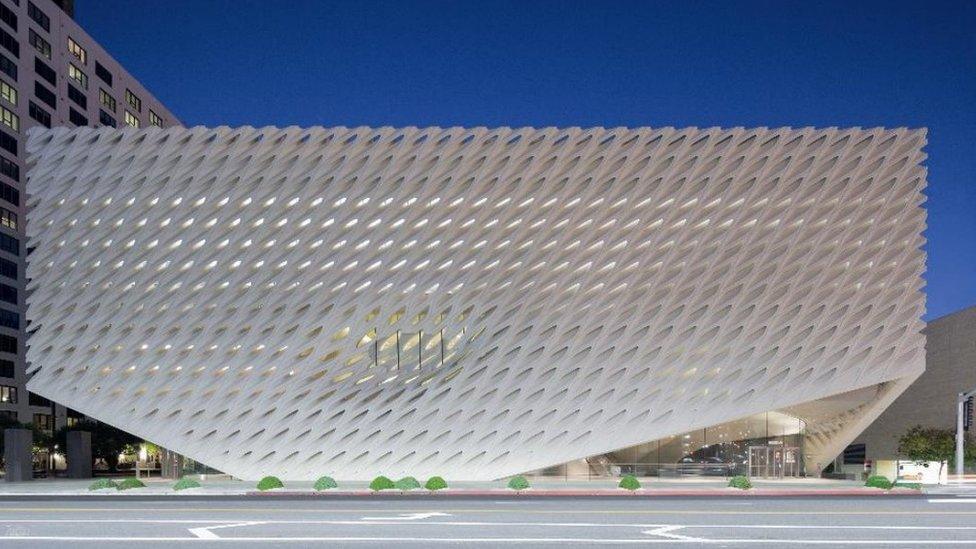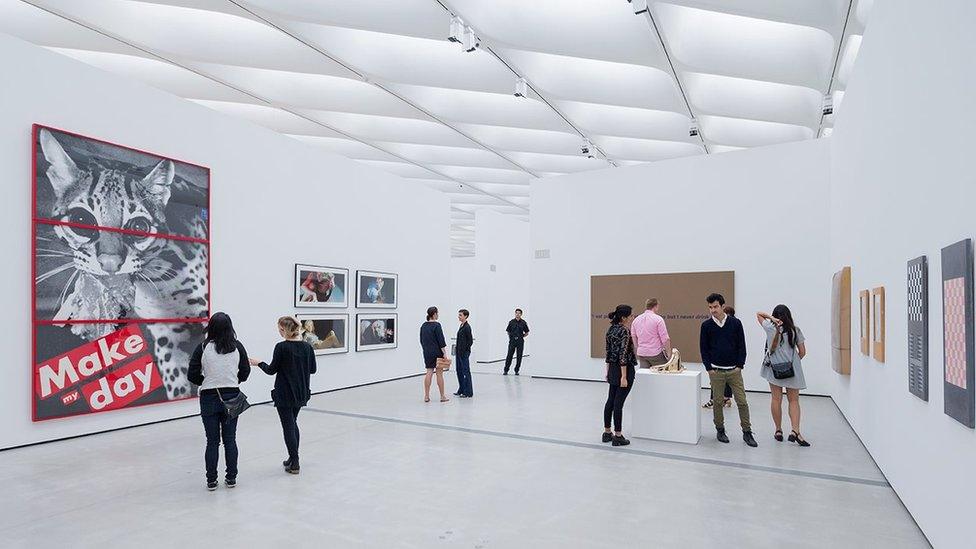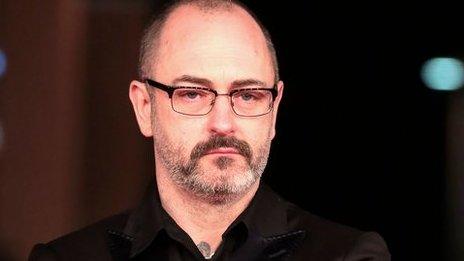Inside billionaire Eli Broad's new museum
- Published

The Broad Museum (pronounced Brode) in downtown LA is the newest, shiniest, whitest museum in the world. It is box-fresh, ultra modern, and not yet a week old. It's gleaming exterior, into which biomorphic shapes have been cut in regular intervals, is whiter than white - blindingly so, with LA's incessant sun bouncing off its walls and the metallic skin of Frank Gehry's abutting Disney Concert Hall adding significant wattage to the dazzling effect.
An architectural dimmer-switch comes on when you go inside - where a curving, cavernous foyer is painted from top to toe in a cool mid-grey. It is but a respite. An escalator takes you straight up to the third floor (an homage to Tate Modern, perhaps?) where shiny bright walls provide a clinical backdrop to shiny bright contemporary art.
It is a collection acquired over 40-plus years by the billionaire businessman Eli Broad and his art smart wife Edith. They started with a Van Gogh sketch, which they traded in for a Robert Rauschenberg painting and in the process moved from the 19th to the 20th Century, which is largely where they have stayed.
They now have around 2,000 works, three-quarters of which reside in a foundation the couple have gifted to America, along with the Broad Museum building and a circa £300 million endowment to help towards running costs.
And that's great. And so is the collection. Wherever you look modern masterpieces stare back at you... works that I had no idea they owned.

The third floor gallery includes works by Barbara Kruger, Cindy Sherman, Richard Prince, and Sherrie Levine
My favourite Basquait, for example (Untitled 1981, external), hangs among several others by the late American graffiti-cum-fine artist. There's lots of Jeff Koons, including his very early New Hoover Deluxe Shampoo Polishers (1981-87). And Lichtenstein a-plenty, plus Warhol, Johns, Hirst, Kruger and Ruscha.
The Museum's walls are covered with class-A art, without a dud among the 250-odd works on display. Which should be marvellous, but is actually a bit weird. I mean, you really can have too much of a good thing... Walking around the Broad is like turning the pages of one of those illustrated modern art books where each artist is listed chronologically with a page or two given to images of his or her work along with a short text. It feels superficial, one-dimensional, and single paced: A mid-range algorithm could have curated the display.
Which is to say, the experience feels remarkably impersonal. And that's strange given the collection was put together by two intelligent, art curious individuals. Yet, there is no sense of their taste or personality, there are no curios or discoveries: It's more a clichéd modern art greatest hits collection rather than a lovingly made mix tape.
Hopefully, that will change as the museum becomes established and starts to build some confidence: The confidence to show that the Broad collection is more than the corporate trappings of a corporate guy, which has been displayed in a cold corporate manner.
It needs to show some personality, some quirks: A demonstration of some taste - both good and bad.
- Published14 July 2015
